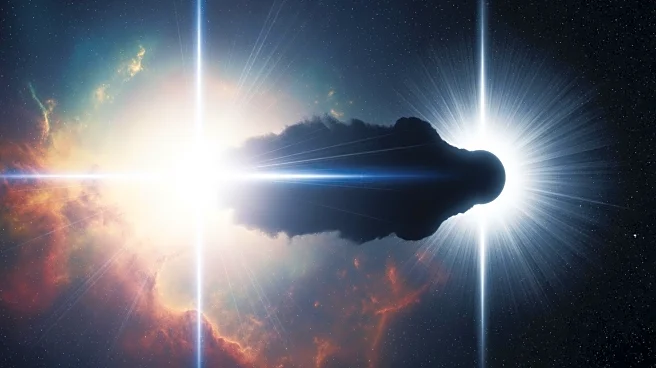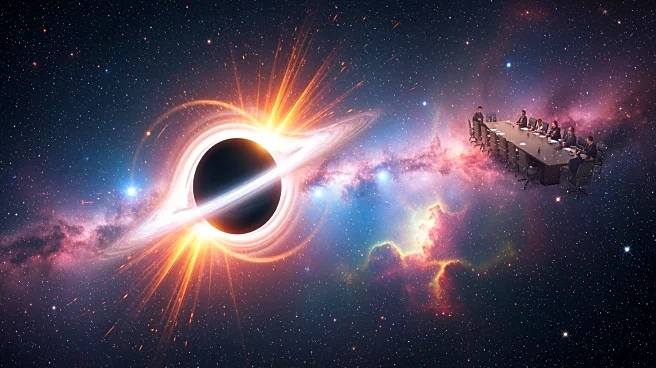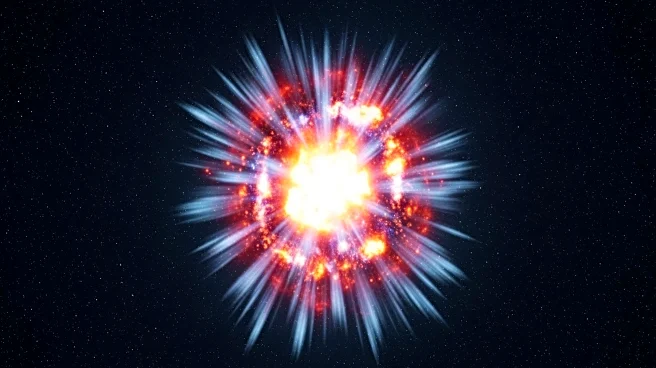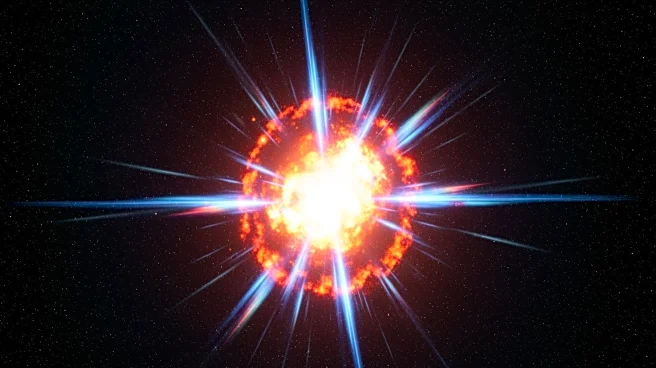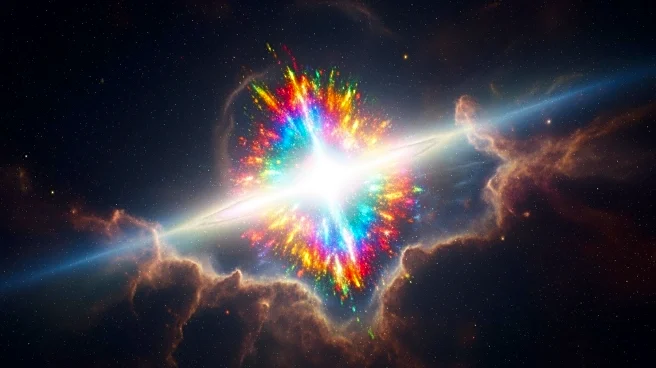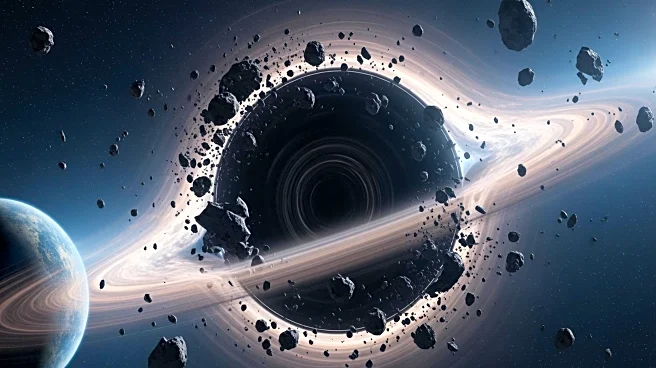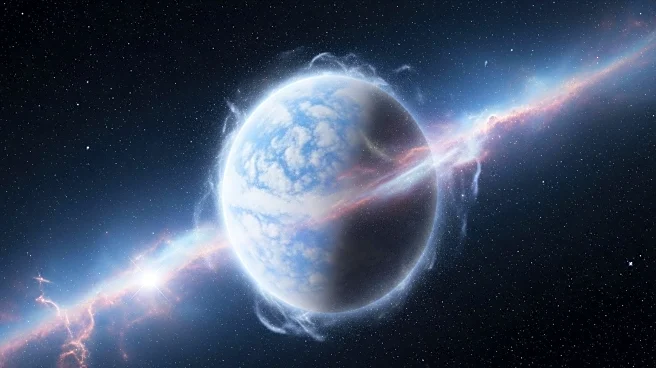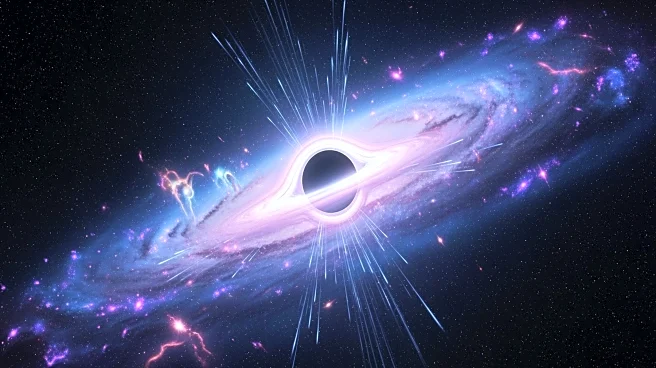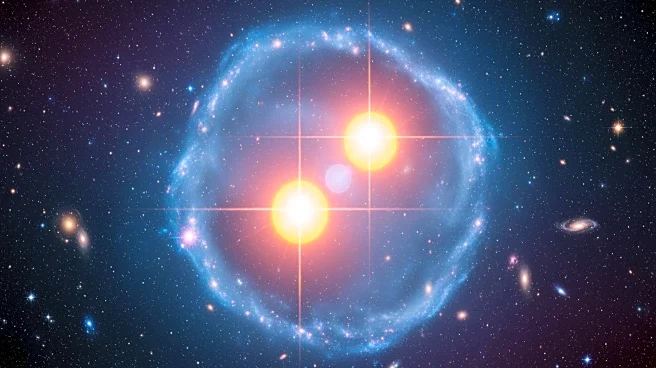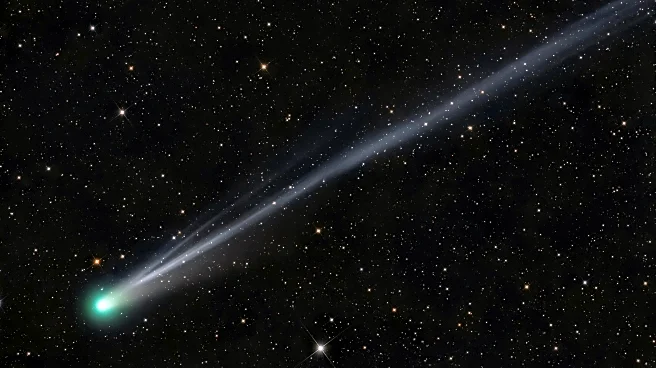What's Happening?
Astronomers have observed an unusual gamma-ray burst, GRB 250702B, which may have been caused by a black hole tunneling through a star and exploding it from within. This event, detected on July 2, 2025,
by NASA's Fermi space telescope, lasted for an unprecedented seven hours, with the burst fading and brightening multiple times. The burst's location was pinpointed to a faint galaxy near the constellations Aquila and Scutum. Researchers, including teams led by Andrew Levan and Benjamin Gompertz, have used various telescopes, including the James Webb Space Telescope, to study the burst's host galaxy and its afterglow. The burst's long duration and unique characteristics have led scientists to propose that it might be the result of a white dwarf star being tidally disrupted by an intermediate-mass black hole, although other theories suggest a unique merger involving a helium star and a stellar-mass black hole.
Why It's Important?
The observation of GRB 250702B provides valuable insights into the behavior of gamma-ray bursts and the interactions between black holes and stars. Understanding such rare events can enhance knowledge of cosmic phenomena and the lifecycle of stars. The findings could lead to new models explaining gamma-ray bursts, which are significant for studying the universe's evolution and the formation of black holes. The event's unique nature challenges existing theories and may prompt further research into the mechanisms behind gamma-ray bursts, potentially leading to discoveries about the universe's most energetic events.
What's Next?
Further analysis and data collection from observatories worldwide are expected to continue, as researchers aim to confirm the proposed theories about GRB 250702B. The publication of a NASA press release, accompanied by animations, is anticipated, although it may be delayed due to a government shutdown. The scientific community will likely explore additional observations and simulations to better understand the dynamics of black hole-star interactions and their role in gamma-ray bursts. These efforts may lead to the identification of new gamma-ray burst progenitor systems and contribute to the broader field of astrophysics.
Beyond the Headlines
The event highlights the complexity and unpredictability of cosmic phenomena, emphasizing the need for advanced observational technologies and international collaboration in astronomy. It also underscores the importance of theoretical innovation in explaining rare astronomical events. The potential discovery of a new gamma-ray burst progenitor system could reshape understanding of stellar evolution and the formation of black holes, influencing future research directions in high-energy astrophysics.
